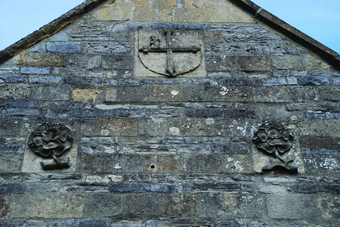Archaeology at Glastonbury Abbey on-line
Trustees of Glastonbury Abbey, 2007. (updated 2010) https://doi.org/10.5284/1000292. How to cite using this DOI
- Archive introduction
- Great Church report
- Lady Chapel report
- St Patrick's Chapel report
- Undercroft report
- Topographic Survey
- Photogrammetric Survey
Data copyright © Trustees of Glastonbury Abbey, Individual Authors unless otherwise stated
This work is licensed under the ADS Terms of Use and Access.

Primary contact
Dr
John
Allan
Exeter Archaeology
The Custom House
The Quay
Exeter
EX2 4AN
England
Resource identifiers
- ADS Collection: 770
- DOI:https://doi.org/10.5284/1000292
- How to cite using this DOI
St Patrick's Chapel, Glastonbury Abbey, Archaeological recording
Introduction

A small medieval chapel dedicated to St Patrick stands within the precinct of Glastonbury Abbey, in the area of the modern ticket entrance and museum. In 2008-9 the Trustees of the abbey decided that this was in need of careful conservation including the refurbishing of the interior. Such work can entail the removal of plaster and exposure of historic features. In this instance the external wall faces were to be covered in lime render, since their soft grey lias stones were weathering badly. The Trustees therefore agreed that that as part of the programme of conservation and redisplay a detailed archaeological record of the building would be made. At that stage the chapel was understood to be a simple structure, built to serve the almshouse for women which was set up in this corner of the abbey precinct around 1514, with a west wall rebuilt by the architect W. Caroe around 1910.
Stewart Brown, a specialist in the archaeological study of standing buildings, was appointed to carry out the study. As repairs proceeded he made detailed measured drawings of each of the elevations of the building, including parts of the fabric which were only briefly exposed and are now covered in lime plaster. He recorded the different building stones, mortars and alignments of the chapel walls.
Stewart's study revealed a quite different picture from that previously believed. It throws exciting new light on the structural history of the chapel and on the development of the surrounding area of the abbey precinct. It shows that in the 13th/14th centuries this part of the precinct was divided into a number of courts enclosed by stone walls. Some of the boundary walls preceding the almshouses were retained when the area was laid out in the early 16th century; the chapel occupied one corner of an older court and incorporated its walls on two sides. Three different phases of building works then took place in the chapel, all probably in the short span of time before the Reformation. Rather than being a work of Caroe as previously believed, the chapel's west wall retains very fragmentary remains of medieval wall-painting.




